10 Apple Devices You Shouldn't Buy Right NowAhead of Apple events expected over the next two months, there are now ten Apple devices that customers currently should not buy, with replacement models fast approaching.

The fall is always a very busy period for Apple, often with at least two special events to launch new products and the release of major software updates for all of the company's platforms. This year looks to be no different, with significant hardware updates rumored to reach Apple's AirPods,
iPhone, Apple Watch,
iPad, and Mac lines.
<h3>AirPods Pro</h3>
The
AirPods Pro launched
over 1,000 days ago and are the oldest current-generation Apple device still on sale.

Apple
announced the AirPods Pro on Monday, October 28, 2019. The earbuds went on sale immediately and orders started arriving to customers on Thursday, October 31. Apple went on to release the
AirPods Max in December 2020 and the third-generation AirPods in October 2021. After the
discontinuation of the iPod touch earlier this year, the ‌AirPods Pro‌ became the oldest current-generation Apple device still on sale.
Apple analyst
Ming-Chi Kuo,
Bloomberg's
Mark Gurman, and Taiwanese industry publication
DigiTimes have repeatedly said that the ‌AirPods Pro‌ 2 will launch in the second half of 2022, so the new model is now likely just a matter of weeks away. According to reports from a range of sources, the ‌AirPods Pro‌ 2 are expected to feature:
<ul>
<li>The
same design as the current model.</li>
<li>
Skin-detect sensors instead of IR sensors.</li>
<li>"
Significantly upgraded" wireless chip.</li>
<li>
Support for Apple Lossless Audio Codec (ALAC) playback.</li>
<li>
Updated motion sensors with a focus on fitness tracking.</li>
<li>A
sound-emitting charging case for location-tracking purposes.</li>
</ul>
It has also been
suggested that the ‌AirPods Pro‌ 2 will feature an updated chip, self-adaptive noise cancellation capabilities, heart rate and temperature sensors, hearing aid capabilities, and a USB-C port, but
Ming-Chi Kuo and
Mark Gurman have cast doubt over this information.
Kuo has narrowed down the launch of the ‌AirPods Pro‌ 2 to the
fourth quarter of 2022, which runs from October through December of the year. This means the ‌AirPods Pro‌ 2 could arrive around three years after their predecessors. Given their age and seemingly imminent repalcement, customers should hold off on buying ‌AirPods Pro‌ until the new model launches.
<h3>Apple Watch Series 3</h3>
The Apple Watch Series 3 was released in September 2017, making it almost five years old. It is the
oldest device to support the latest version of
watchOS 8, but its S3 chip significantly lags behind the
Apple Watch SE's S5 chip and
Apple Watch Series 7's S7 chip in terms of performance. The Apple Watch Series 3 is also the only remaining Apple Watch to feature the older, thicker Apple Watch design with large bezels and angular corners around the display.
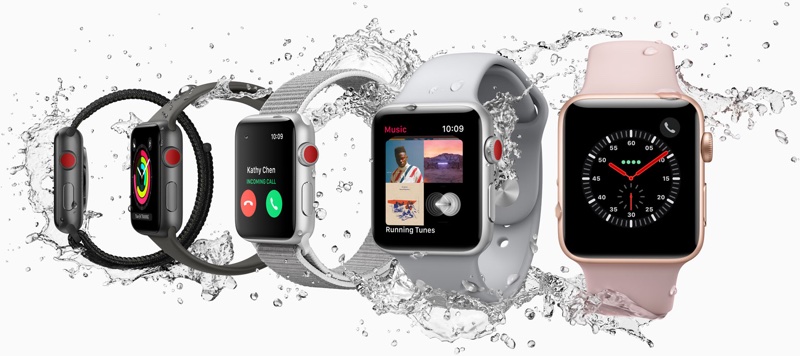 Following the iOS 14.6 and watchOS 7.5
Following the iOS 14.6 and watchOS 7.5 updates last year, Apple Watch Series 3 users have to unpair and re-pair the device from its linked ‌iPhone‌ when updating watchOS because the Apple Watch does not have enough internal storage to complete an update independently.
In June, Apple previewed
watchOS 9, the next-generation operating system for the Apple Watch. The new OS
drops support for the Apple Watch Series 3, meaning that the device will be left running ‌watchOS 8‌. Despite this, the Apple Watch Series 3 is still on sale. Apple is
expected to discontinue the device when new Apple Watch models launch next month, and since it will not support the latest version of watchOS, potential customers should no longer buy the device.
<h3>Apple Watch SE</h3>
The ‌Apple Watch SE‌ debuted in 2020 as a low-cost option for customers. As it nears two years since launch, sources like
Gurman and
Kuo expect the the ‌Apple Watch SE‌ to be to be replaced by a second-generation model alongside the
Apple Watch Series 8 next month.
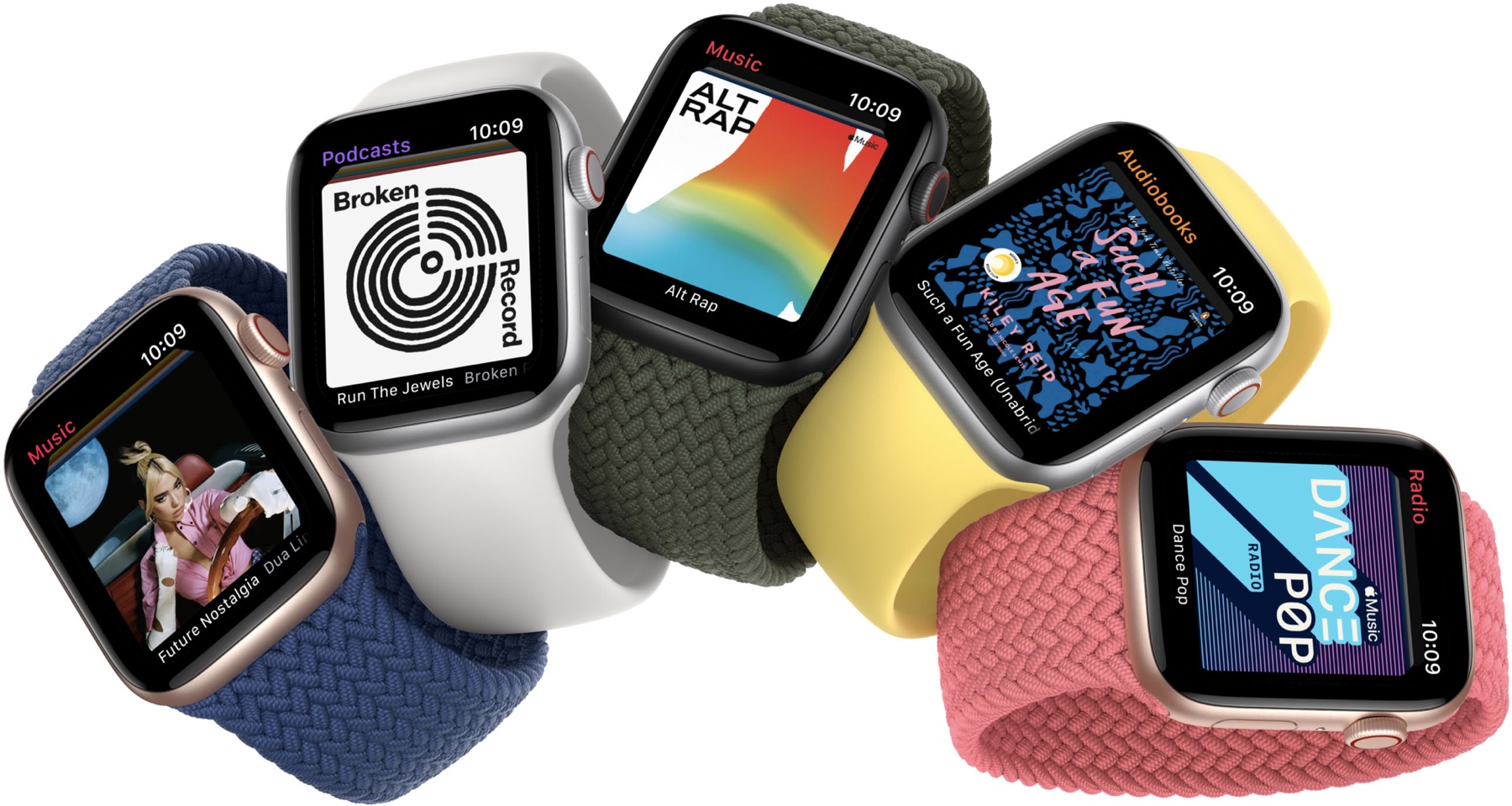
Little is known about the new ‌Apple Watch SE‌, but Gurman says that it
may feature the "S8" chip. The S8 chip will reportedly feature the same specifications as the S6 and S7 chips, which may explain why Apple could upgrade the ‌Apple Watch SE‌ to its latest processor. Indeed, since all of the chips that are newer than the ‌Apple Watch SE‌'s current processor are effectively the same, it will make no material difference whether it has the S6, S7, or S8 – all of which offer a moderate performance improvement over the S5.
Coming two years after the previous model, the new ‌Apple Watch SE‌ is likely to bring some other features and improvements, and will almost certainly support the latest version of watchOS for longer, so buyers looking for a lower-cost Apple Watch should wait until the new model arrives next month.
<h3>Apple Watch Series 7</h3>
The ‌Apple Watch Series 7‌ is almost a year old. While it shipped later than usual due to delays, its successor, the ‌Apple Watch Series 8‌, is expected to be unveiled next month.
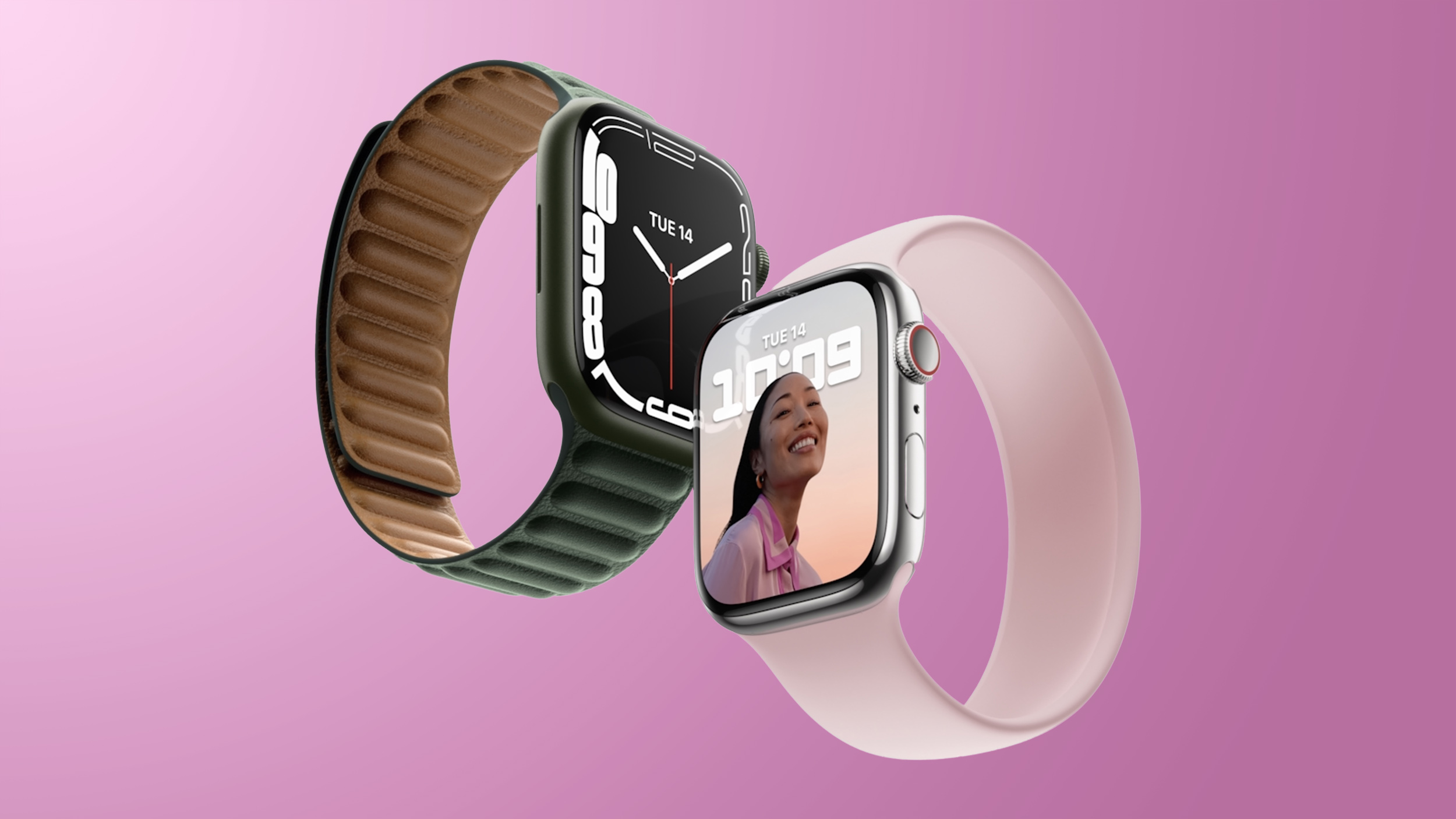
While the Series 8 will likely feature the
same design as the ‌Apple Watch Series 7‌, it is expected to offer an updated chip, software enhancements, and
new health monitoring features thanks to a
body temperature sensor, with updates including:
<ul>
<li>S8 chip</li>
<li>Body temperature sensor for
enhanced sleep tracking and
fertility planning</li>
<li>
Low Power Mode to prolong battery life</li>
</ul>
Simultaneously, Apple is also said to be planning to launch a high-end Apple Watch "Pro" model that could
replace the Apple Watch Edition, featuring:
<ul>
<li>
Five to
seven percent larger display to show more on-screen fitness metrics</li>
<li>
Larger battery to enable longer workout times</li>
<li>
New design with a
ruggedized titanium alloy casing, potentially with a
flat display</li>
</ul>
As such, with the entire Apple Watch lineup set to be overhauled in a matter of weeks, Apple Watch buyers should now wait for new models to arrive.
<h3>iPhone 12 and iPhone 13</h3>
Early September is expected to see the launch of the
iPhone 14 lineup in one of the most important Apple releases of the year.
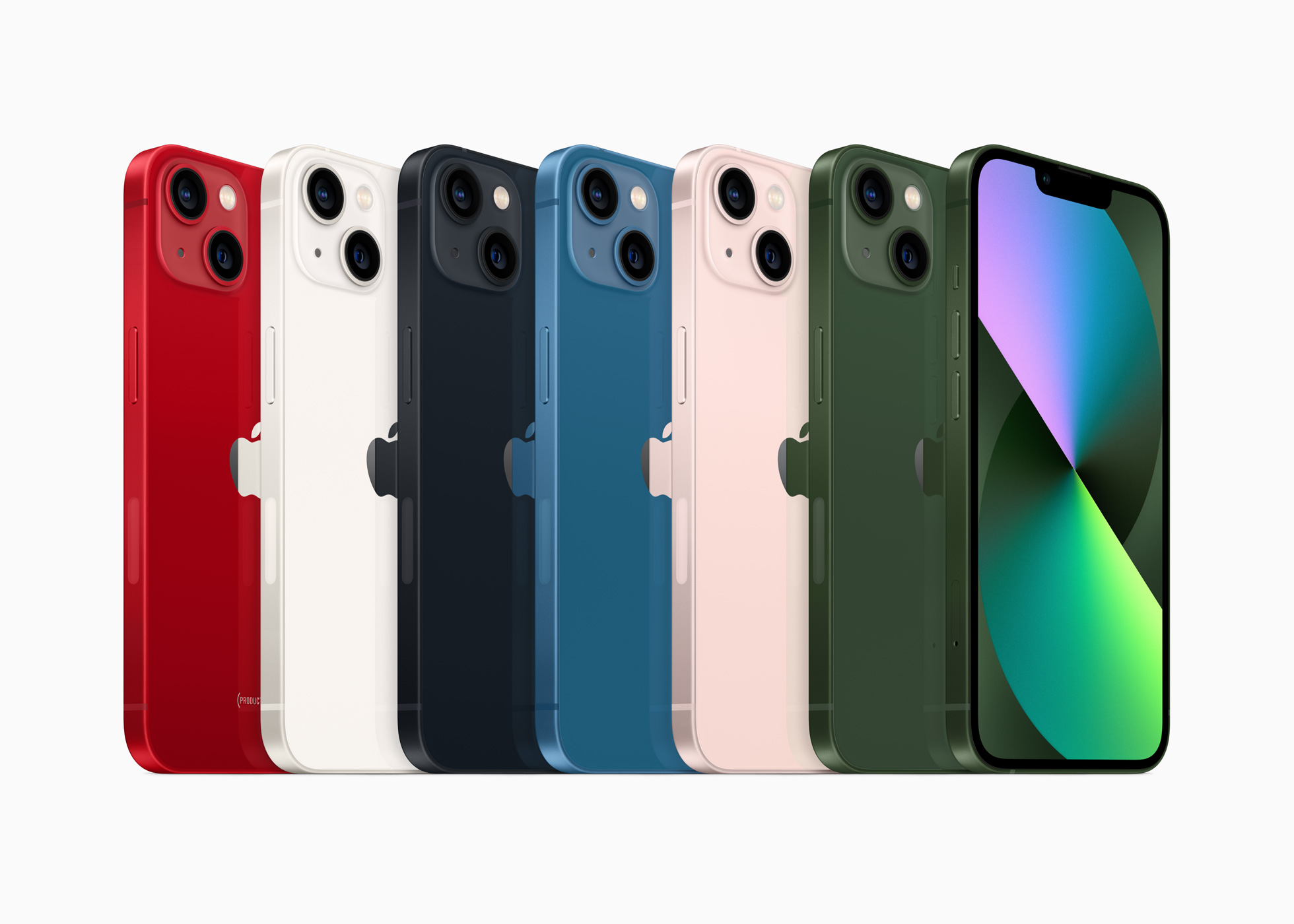
After
lackluster sales for the
iPhone 12 mini and
iPhone 13 mini, which both feature a 5.4-inch display, Apple is reportedly
planning to discontinue its small form-factor iPhone and replace it with a comparatively gargantuan 6.7-inch display on the ‌iPhone 14‌ Max – making it the same size as the
iPhone 13 Pro Max. While there will reportedly be no "‌iPhone 14‌ mini," the ‌iPhone 14‌ Max will provide a cheaper option for users who want a new ‌iPhone‌ with a larger display, but do not need "Pro" features like a ProMotion display and the telephoto camera. The ‌iPhone 14‌ and ‌iPhone 14‌ Max are expected to feature modest upgrades, including:
<ul>
<li>
A15 Bionic chip with
minor performance improvements</li>
<li>
6GB of LPDDR 4X memory, a 50 percent increase</li>
<li>
New, more efficient 5G chip that could prolong battery life</li>
<li>
Wi-Fi 6E connectivity</li>
<li>
Satellite-based emergency features to allow users to send messages in emergency situations and report major emergencies</li>
<li>
ƒ/1.8 Ultra Wide camera</li>
<li>
Upgraded front camera system with autofocus and a wider ƒ/1.9 aperture</li>
</ul>
The devices are also rumored to come in a
range of color options, including
Black (Midnight), White (Starlight), Blue, PRODUCT(RED), and Purple.
The ‌iPhone 13‌ mini and ‌iPhone 13‌ are expected to see a price drop when they are replaced by the ‌iPhone 14‌ and ‌iPhone 14‌ Max this year, while the ‌iPhone 12 mini‌ and
iPhone 12 could be discontinued, so now is not a good time to buy any of these mid-level ‌iPhone‌ models.
<h3>iPhone 13 Pro</h3>
At the high-end, the ‌iPhone 13 Pro‌ and ‌iPhone 13 Pro‌ Max are expected to be replaced by the
iPhone 14 Pro and ‌iPhone 14 Pro‌ Max, headlining with features such as thinner bezels and a "pill and hole-punch" TrueDepth camera array design in place of the notch.
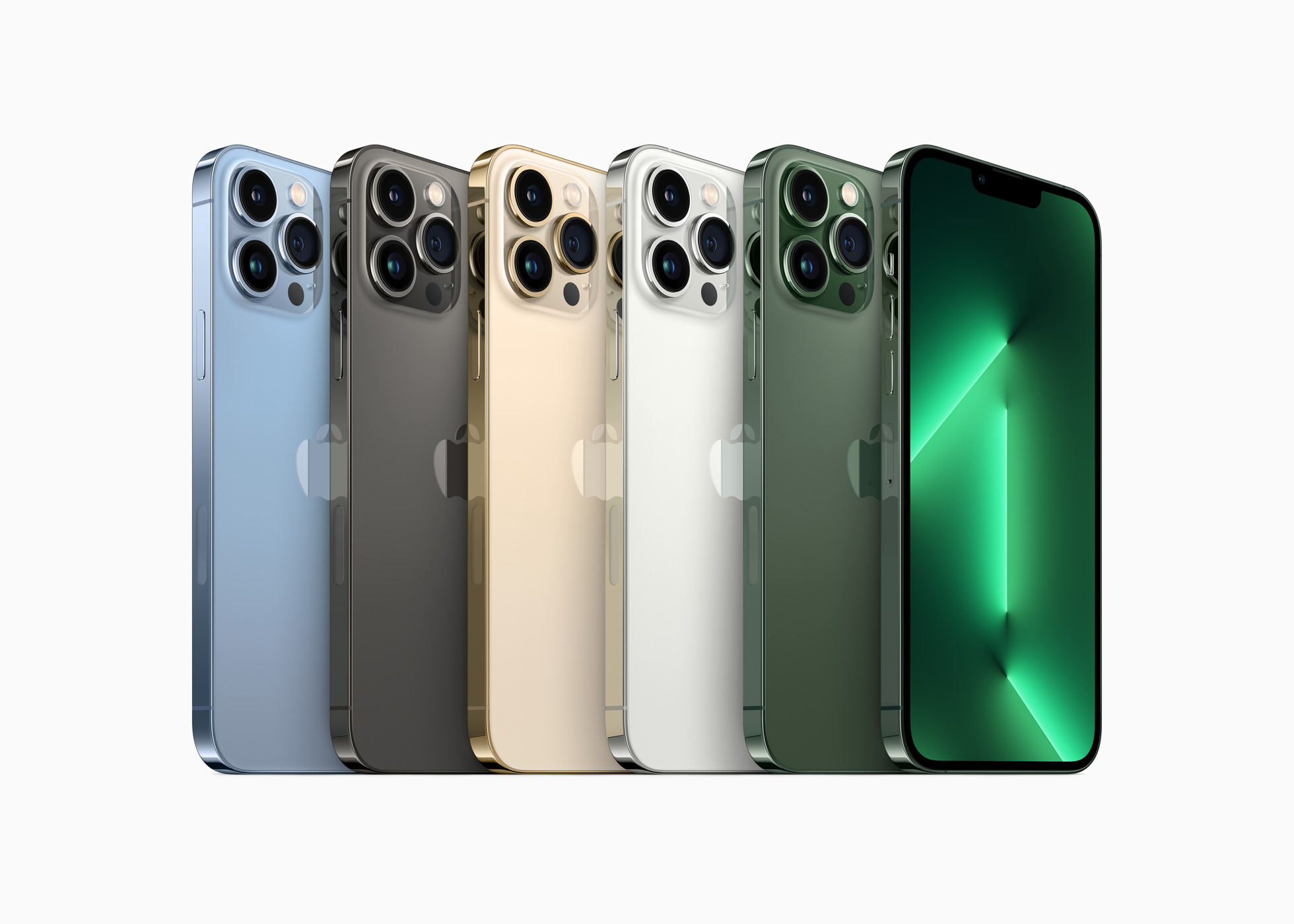
For the first time, the standard ‌iPhone‌ models are also expected to miss out on Apple's latest chip, with the
"A16" reserved for the iPhone 14 Pro only. According to rumors so far, ‌iPhone 14 Pro‌ models are expected to feature:
<ul>
<li>
A16 Bionic chip</li>
<li>
Always-on display mode
optimized for iOS 16's redesigned Lock Screen</li>
<li>"
Pill and hole-punch" TrueDepth camera array in place of the notch</li>
<li>
Taller display with
thinner bezels</li>
<li>
Larger corner radii for a more rounded front and rear appearance compared to the ‌iPhone 13 Pro‌</li>
<li>
48-megapixel Wide camera with 8K video recording and
pixel-binning</li>
<li>7-element Telephoto lens</li>
<li>Front-facing camera with ƒ/1.9 aperture and autofocus</li>
<li>
256GB, 512GB, 1TB, and
2TB storage options</li>
</ul>
The ‌iPhone 14 Pro‌ and ‌iPhone 14 Pro‌ Max will
allegedly come in Graphite, Gold, Silver, and Purple color options. While the ‌iPhone 14 Pro‌ models could see a
slight price increase this year, the new models offer significant upgrades and price rises could be justified
if the devices start with more storage.
The ‌iPhone 13 Pro‌ and ‌iPhone 13 Pro‌ Max are likely to be discontinued upon the release of the new models, which will subsequently slash prices with third-party resellers – so it is clearly preferable to avoid purchasing either of these devices at the current time.
<h3>iPad (Ninth-Generation)</h3>
Apple released the ninth-generation ‌iPad‌ in September last year, and it typically updates the entry-level ‌iPad‌ annually. An all-new, tenth-generation ‌iPad‌ is on the cards for an
Apple event in October.
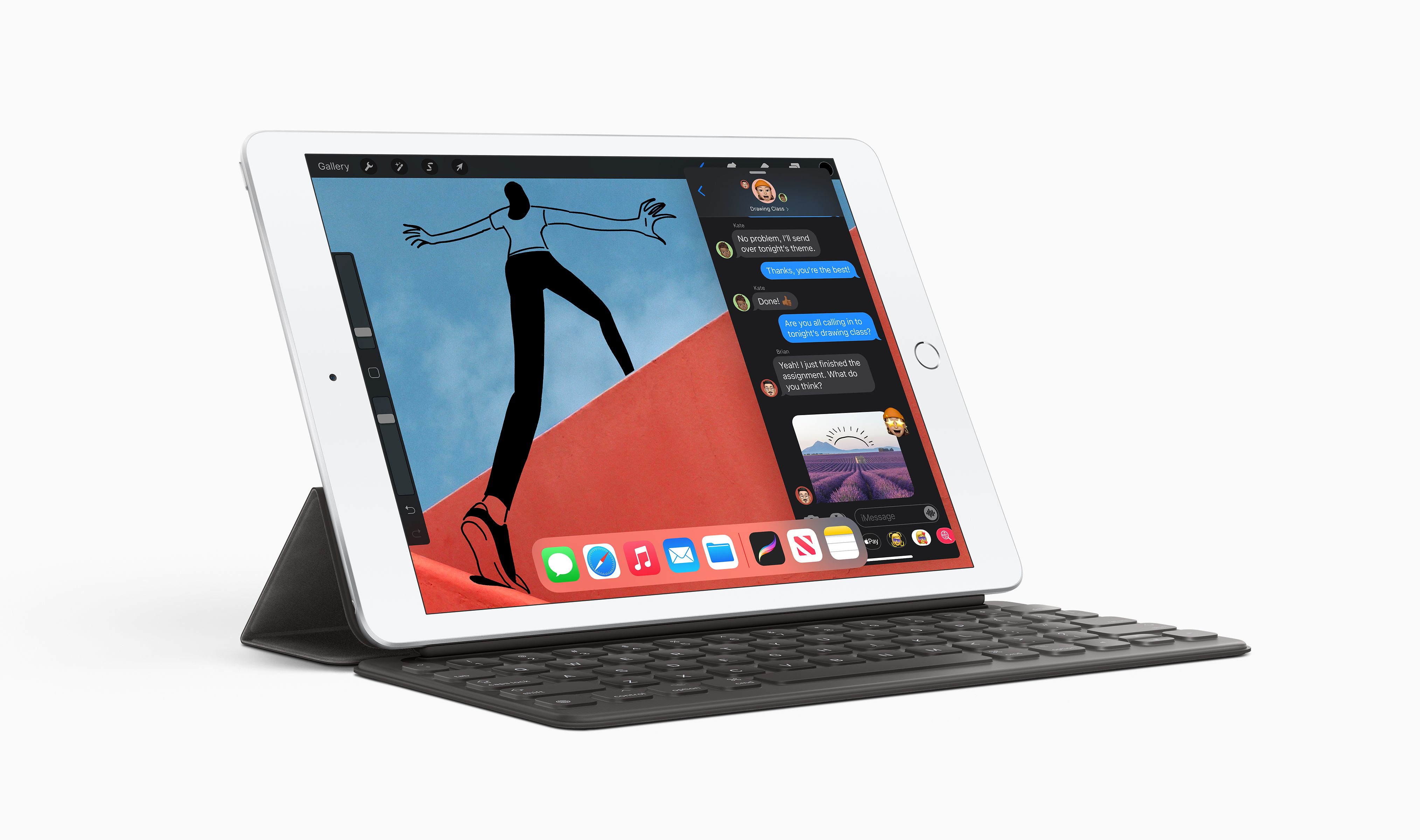
The ninth-generation ‌iPad‌ unveiled last year features a 10.2-inch display, an A13 Bionic chip, a 12-megapixel front camera with support for the Center Stage feature, and support for the first-generation
Apple Pencil. Reports from display analyst
Ross Young,
alleged leaked renders and
other rumors indicate that the tenth-generation ‌iPad‌ will offer:
<ul>
<li>Slightly wider and thinner new design with flat sides and a rear camera bump</li>
<li>A14 Bionic chip</li>
<li>10.5-inch display</li>
<li>USB-C port</li>
<li>5G connectivity for cellular models</li>
</ul>
A
questionable report also said that the ‌iPad‌ will feature a
Touch ID power button and a landscape
FaceTime camera. The tenth-generation ‌iPad‌ is shaping up to be a major update over the previous model, so ‌iPad‌ buyers should no longer buy the ninth-generation model if possible.
<h3>iPad Pro</h3>
Apple's current 11-inch and 12.9-inch
iPad Pro models launched in April 2021, making them the
longest-lasting iPad Pro models to date. The company is now expected to launch updated ‌iPad Pro‌ models at an
event in October.
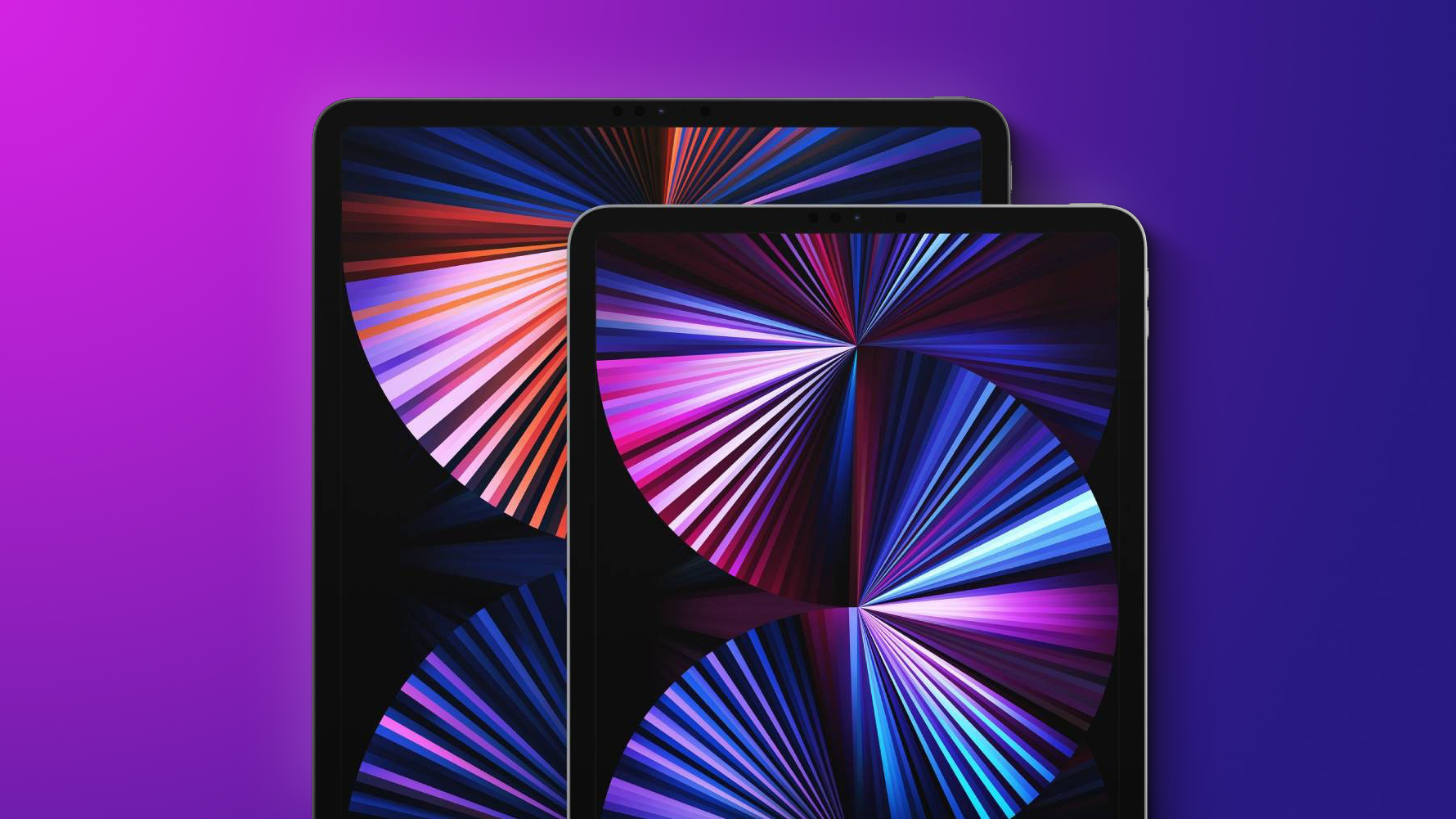
According to sources like
Mark Gurman and
Mac Otakara, the new ‌iPad Pro‌ models are expected to feature the same design with at least four additions:
<ul>
<li>
M2 chip</li>
<li>Glass back with
MagSafe wireless charging, potentially with reverse functionality to charge other devices</li>
<li>Two new four-pin connectors on the top and bottom side edges</li>
<li>
Camera system upgrades</li>
</ul>
While the ‌iPad Pro‌ update could be one of Apple's smaller hardware refreshes this year, the age of the current device and comparatively short wait for new models means that it is not a good time to buy an ‌iPad Pro‌ at present.
<h3>Mac mini</h3>
Apple has been believed to be
working on a new Mac mini for some time. It updated the entry-level
Mac mini with the
M1 chip in November 2020, and the
high-end offering is still the Space Gray model with an Intel processor from 2018. The potential of replacing this older high-end model with an Apple silicon machine was previously at the center of rumors related to new Mac minis, but now it looks like both the entry-level and the high-end model may be refreshed simultaneously.
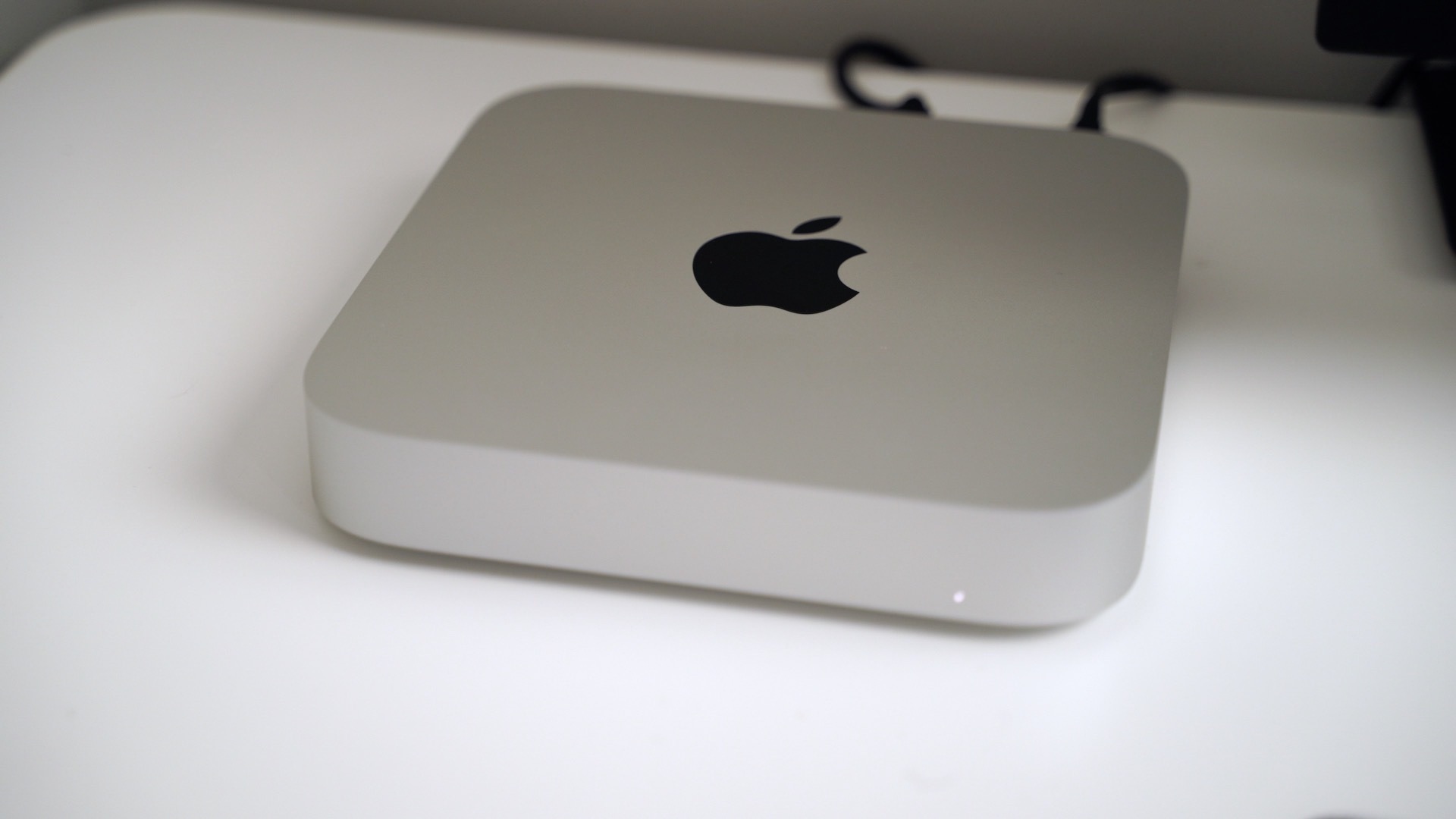
Now, Apple is believed to be working on two versions of the ‌Mac mini‌, one with the standard
"M2" chip and a second higher-end model with the "
M2 Pro" chip.
The ‌Mac mini‌'s design is now well over a decade old, and despite the long wait for a high-end Apple silicon-based ‌Mac mini‌, Apple reportedly has no plans to refresh its design. According to
a claim from
Ming-Chi Kuo earlier this year, the next-generation ‌Mac mini‌ is likely to retain the same form factor as the current model, which is an aluminum unibody design that Apple has used for every new ‌Mac mini‌ since 2010.
Kuo's claim runs contrary to a
rumor from leaker Jon Prosser, who last year said that Apple was working on a complete redesign for the small desktop computer, moving to a smaller chassis with a "plexiglass-like" top.
In line with rumors about the
cancelation of the 2022 ‌Mac mini‌ refresh, Kuo has also said that the new ‌Mac mini‌
will not launch until 2023. Even so, given that the ‌M1‌ ‌Mac mini‌ is one of the oldest Apple silicon Macs still on sale, most customers should wait for a new model to arrive next year.
The Intel-based ‌Mac mini‌ is a relic from the period before Apple began to transition the Mac lineup to its own custom silicon, which offers massive performance and efficiency benefits. For this reason, and since it is effectively four years old, those interested in the high-end Intel ‌Mac mini‌ should not buy it under almost any circumstances.
<h3>Mac Pro</h3>
The
Mac Pro is one of the last Intel-based Mac models still on sale and the only remaining Mac product line with no Apple silicon chip options. An all-new model that finally brings Apple silicon to Apple's top-tier Mac for professionals has now been anticipated for over two years. At its "Peek Performance" event earlier this year, Apple even
teased the launch of the Apple silicon Mac Pro, saying "that's for another day."
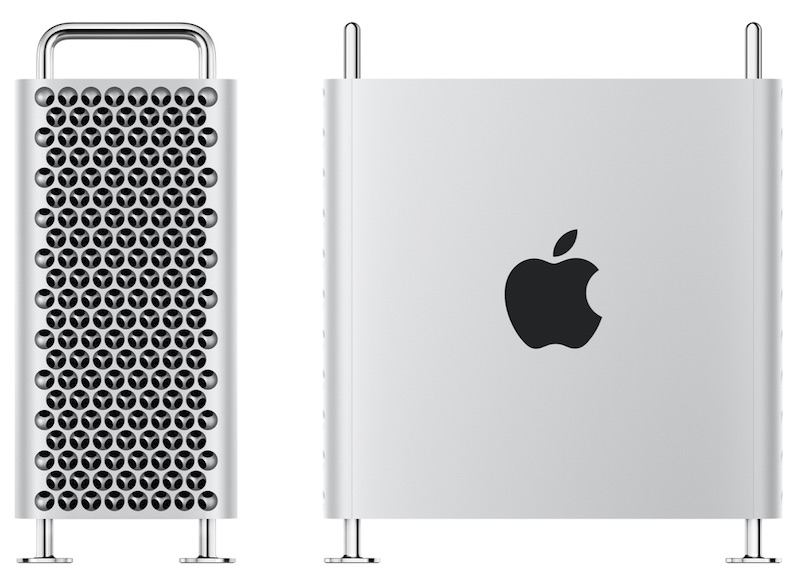
Multiple reports from
Bloomberg's
Mark Gurman about the Apple silicon ‌Mac Pro‌'s
chip options and
specifications provide a fairly straightforward picture of what to expect from the new flagship Mac. The device's
configurations are likely to look as follows:
<div class="left50">
<strong>Mac Pro With M2 Ultra</strong>
<ul>
<li>20-core CPU (16 high-performance cores and four high-efficiency cores)</li>
<li>Up to a 64-core GPU</li>
<li>32-core Neural Engine</li>
<li>64GB or 128GB of unified memory</li>
</ul>
</div>
<div class="right50">
<strong>Mac Pro With M2 Extreme</strong>
<ul>
<li>40-core CPU (32 high-performance cores and eight high-efficiency cores)</li>
<li>Up to a 128-core GPU</li>
<li>64-core Neural Engine</li>
<li>At least 128GB or 256GB of unified memory</li>
</ul>
</div><div class="clear"></div>
The ‌M2‌ Extreme is expected to surpass the top-tier Intel Xeon W CPU option with 28-cores offered in the current Intel-based ‌Mac Pro‌. The ‌M2‌ Extreme's known specifications effectively double the capabilities of the
M1 Ultra in the
Mac Studio, but if it is based on the more advanced 5nm fabrication process behind the current ‌M2‌ chip, it is likely that there will be a range of other improvements in terms of core technologies, efficiency, and clock speed.
The current ‌Mac Pro‌ is available with up to 1.5TB of memory, a $25,000 configuration option available to $11,999 and $12,999 ‌Mac Pro‌ models with 24- and 28-core CPUs. Since Apple silicon Macs use a shared pool of unified memory rather than the conventional DDR4 ECC memory sticks used in the current ‌Mac Pro‌, it seems probable that it will be available with considerably less memory.
The ‌Mac Pro‌ currently starts at $5,999, with the potential to price it up to over $52,000 in custom configurations. The base model Apple silicon ‌Mac Pro‌ with the ‌M2‌ Ultra is almost certain to cost more than the high-end ‌Mac Studio‌ with the ‌M1 Ultra‌, which starts at $3,999. It seems likely that the new base model ‌Mac Pro‌ will continue to start at a price point similar to the current model, but there is no further information about pricing at this time.
Beyond its basic specifications, little is currently known about the device's design, ports, and modularity. Apple is expected to introduce the Apple silicon ‌Mac Pro‌
later this year, and it could be followed by a
"Pro" version of the Studio Display with a mini-LED panel and support for ProMotion in early 2023.
Customers who are confident they will be reliant on a powerful, modular Intel-based system for the foreseeable future could still benefit from buying the current ‌Mac Pro‌, but prices are sure to come down when the Apple silicon ‌Mac Pro‌ is released later this year. Even so, the majority of Pro customers will see considerable benefits from waiting for the most powerful Apple silicon system to date.
This article, "
10 Apple Devices You Shouldn't Buy Right Now" first appeared on
MacRumors.comDiscuss this article in our forums
Source:
10 Apple Devices You Shouldn't Buy Right Now